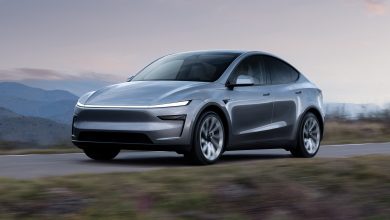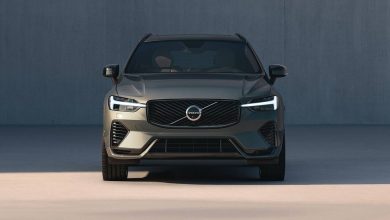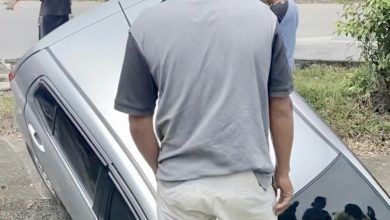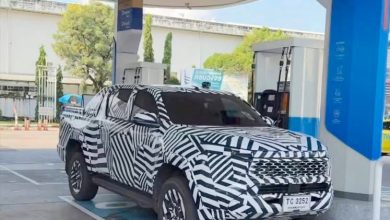Ferrari SF90 Stradale Debut In Malaysia, Fastest Ferrari Ever
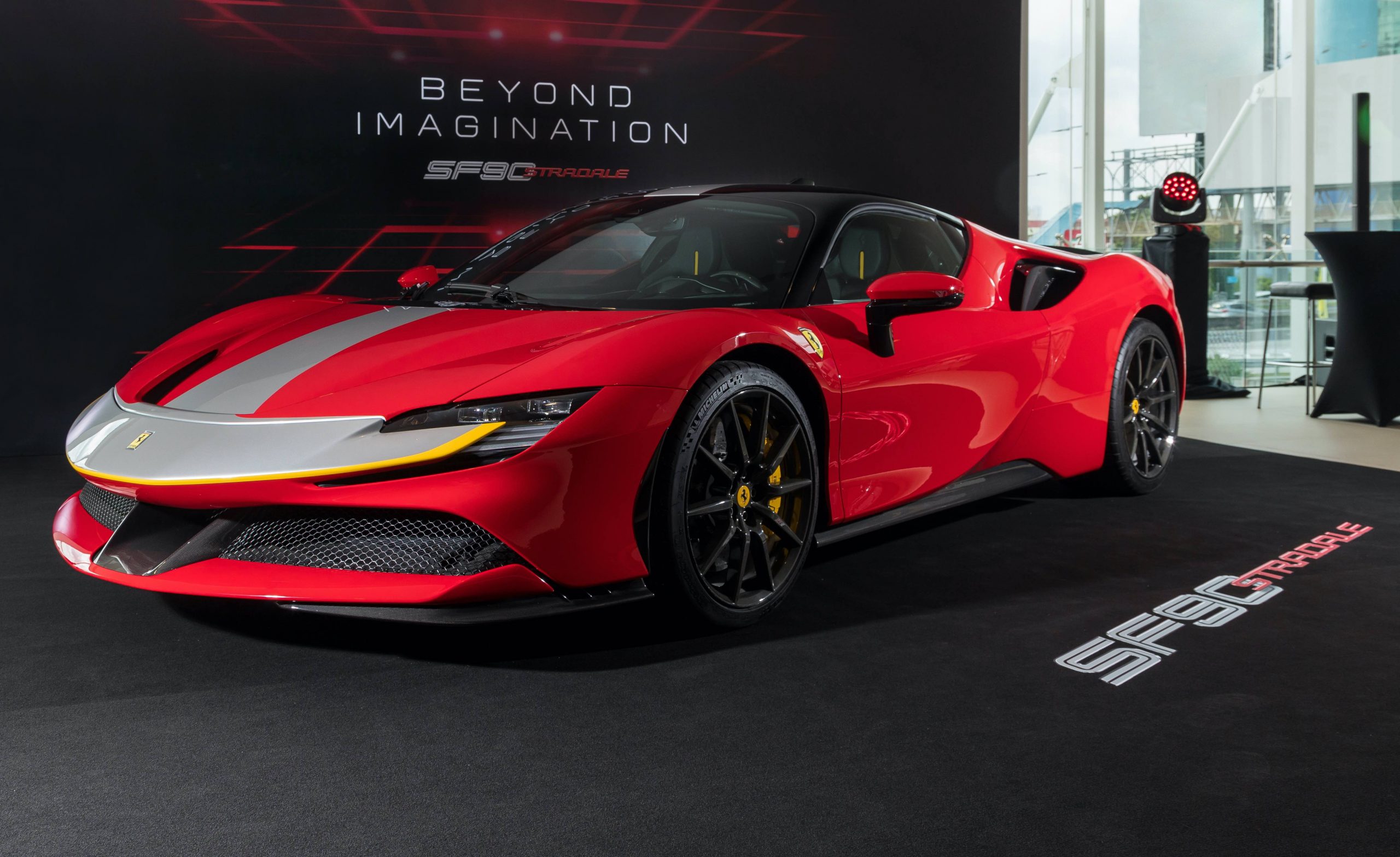
1000 PS in a Ferrari is thanks to a turbocharged V8, and three electric motors.
Apart from the all-electric Porsche Taycan, another eco-friendly performance car was launched too in the form of the Ferrari SF90 Stradale. Both may have electric motors, and both may be mind bendingly fast, but the similarities between the both eco-friendly cars sort of end there.
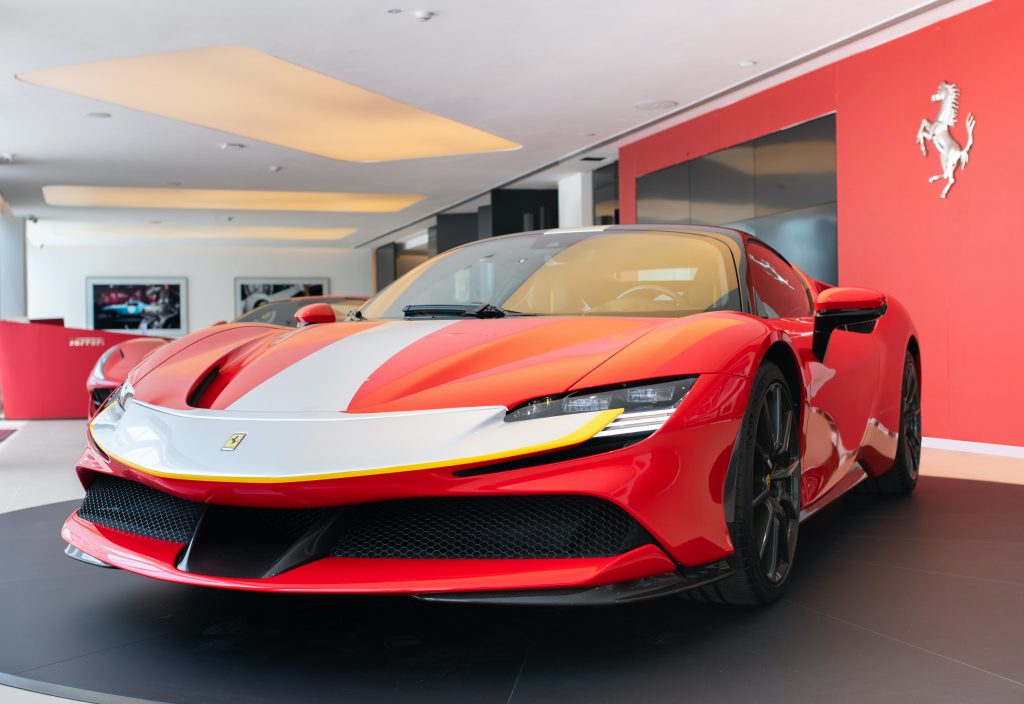
In conjunction with the unveiling of their newly renovated Ferrari showroom along the Federal Highway in Petaling Jaya, Naza Italia, the official importer and distributor of Ferrari in Malaysia, has unveiled this new hybrid-engined Prancing Horse supercar on our shores.
To all the 12 year olds reading these (and to those who are 12 at heart), all you need to know about this Ferrari is that it is possibly the fastest production Ferrari ever. With a 0-100 km/h time in just 2.5 seconds and a top speed of 340 km/h, the SF90 Stradale just pips the legendary LaFerrari on the spec sheet. An impressive feat considering that the LaFerrari was considered the jewel in Ferrari’s crown not too long ago.
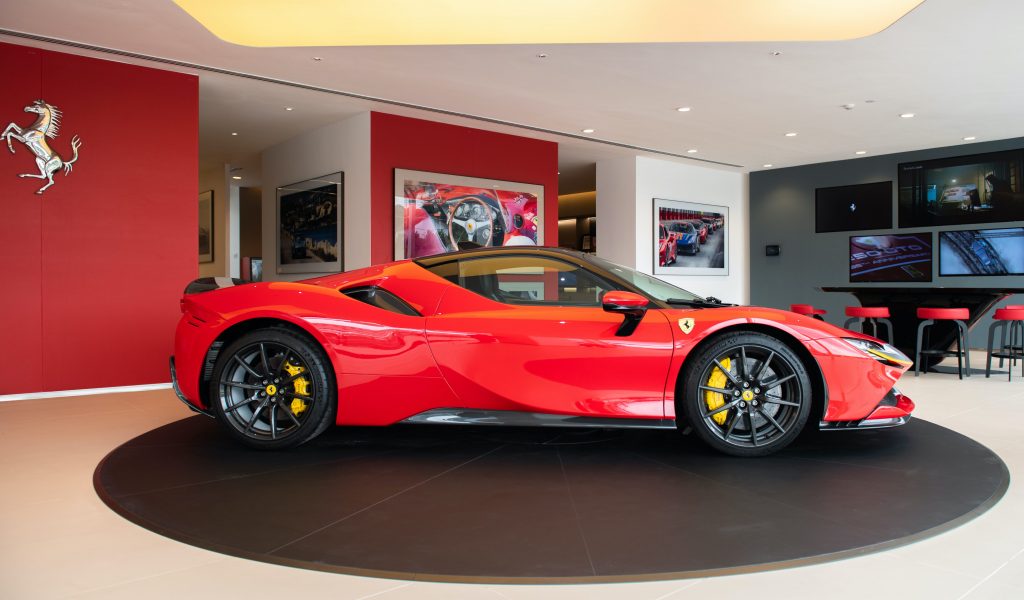
The reason why these numbers are so fantastical all boils down to what lies within the carbon-fibre tub of the SF90 Stradale. Behind the cockpit lies a mid-mounted 4.0 litre turbocharged V8 engine mated to an 8 speed dual clutch transmission that produces 780 PS, incidentally the most powerful production V8 in Ferrari’s history. To get to that 1000 PS number though requires the aide of three electric motors.
Twin electric motors up front make this supercar Ferrari’s first ever four wheel drive sports car, and a rear electric motor is actually a Formula 1 derived MGU-K unit, harnessing kinetic energy during engine braking before deploying it on acceleration. The combined output of these three motors produce the extra 220 PS needed to attain that mystical power figure.
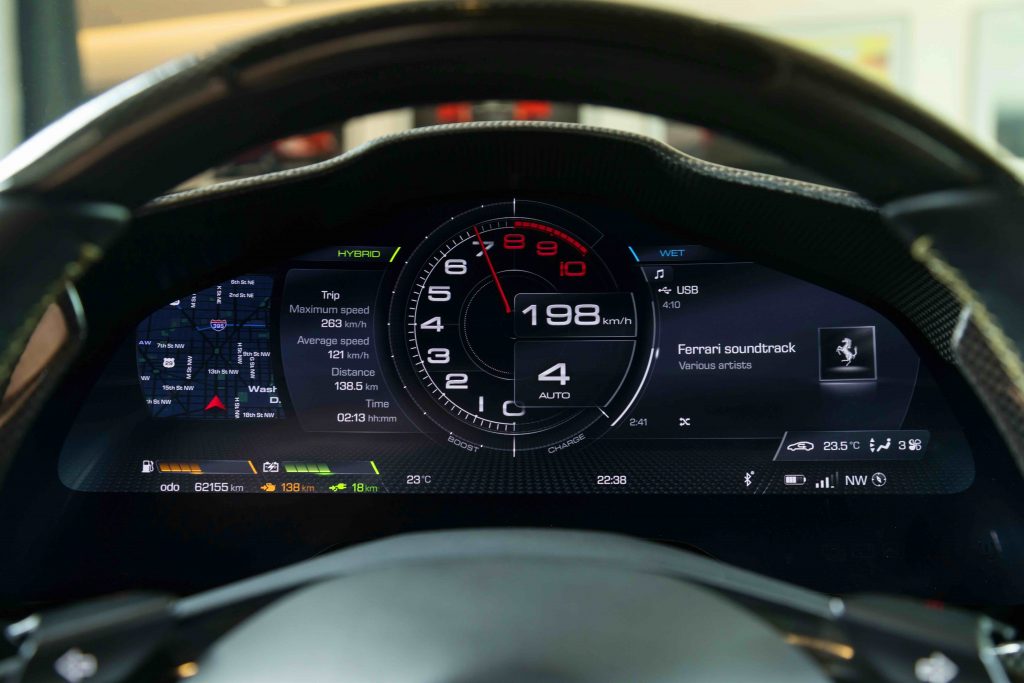
Moving on to the subject of styling, Ferrari’s first PHEV supposedly represents ‘a whole new chapter in Ferrari’s history’. Some might think that it looks a tad weird from the front, and there have even been remarks of it looking like the new C8 Corvette from the rear. Knowing the Italian supercar manufacturer though, all these lines and creases that create this marmite design is there in the pursuit of aerodynamic perfection.
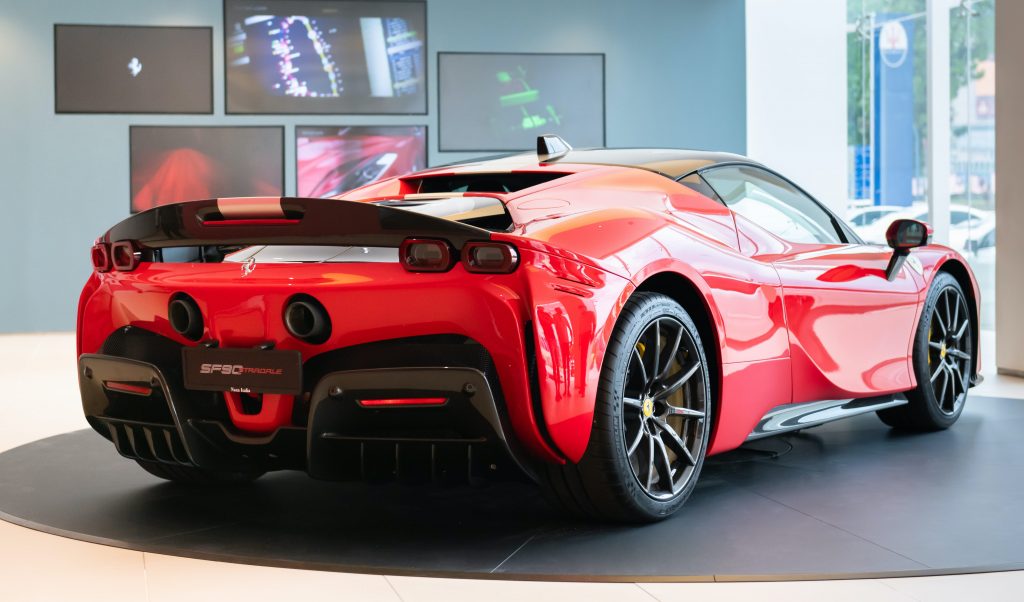
This sentiment rings true as working together with the usual technically advanced suspension system, the SF90 Stradale is the fastest street-legal Ferrari to lap its Fiorano test track with a time of 1’19.00. In other words, only a second slower than a track-prepped Ferrari FXX.
Unlike the exterior of this hybrid Ferrari, the interior on the other hand is not a radical departure from the past. While the dash design incorporates the swoopy design elements of the outside, making it look like the dashboard has melted under the hot sun, the rest of the interior remains relatively familiar for any current Ferrari owner. All the buttons that one uses frequently are still crammed onto the steering wheel, and the pedals are still hilariously offset for right hand drive cars. Par of the course really for Maranello.
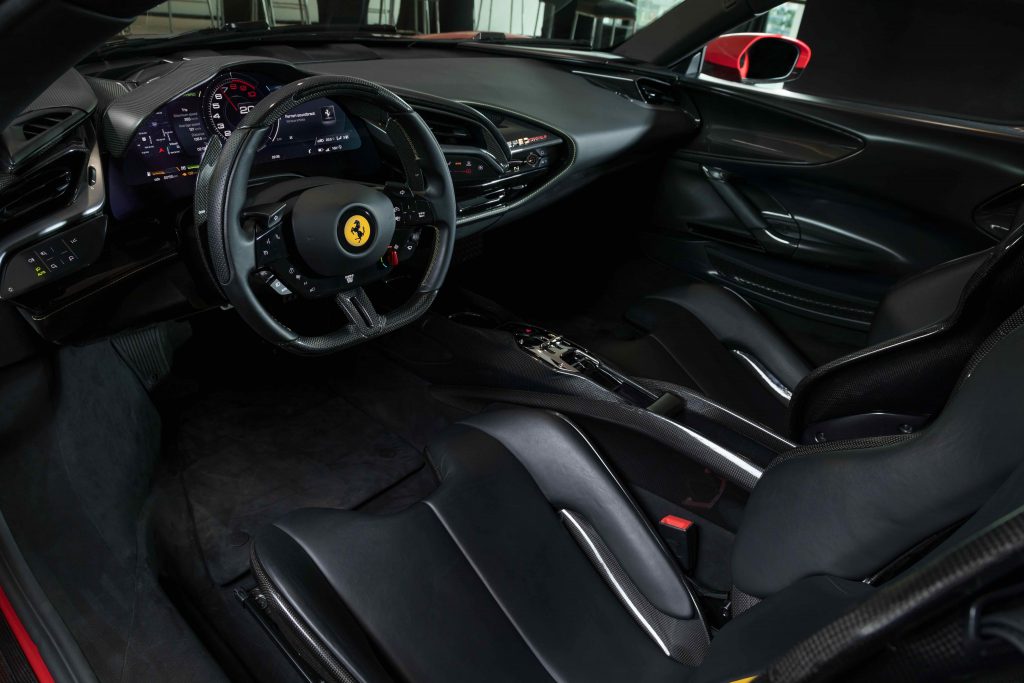
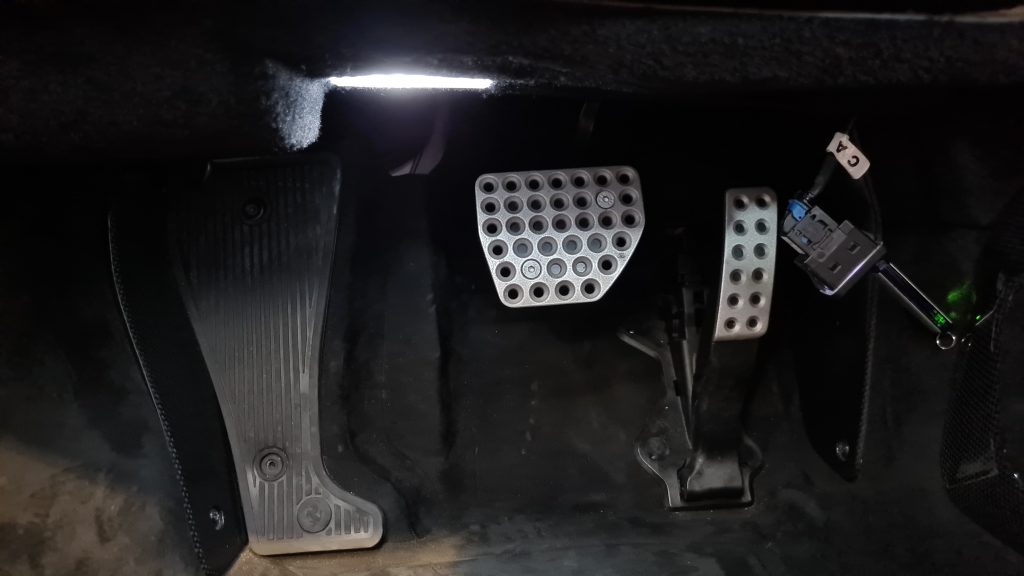
That said though, there are some new technology to go with this new powertrain like the eManettino drive mode selector, that even has a ‘Qualify’ mode that unleashes all 1000 PS upon your command.
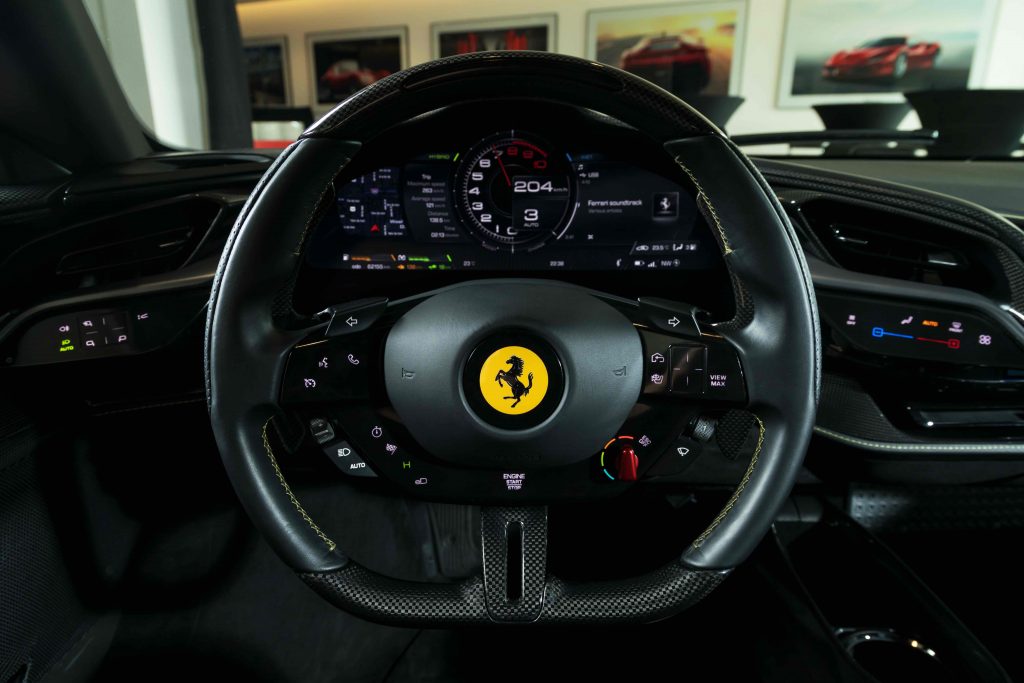
Priced from RM 1.905 million (before tax), this new Ferrari doesn’t come cheap, even if it is the best new Ferrari out there. Perhaps an extended seven-year maintenance programme would seal the deal?
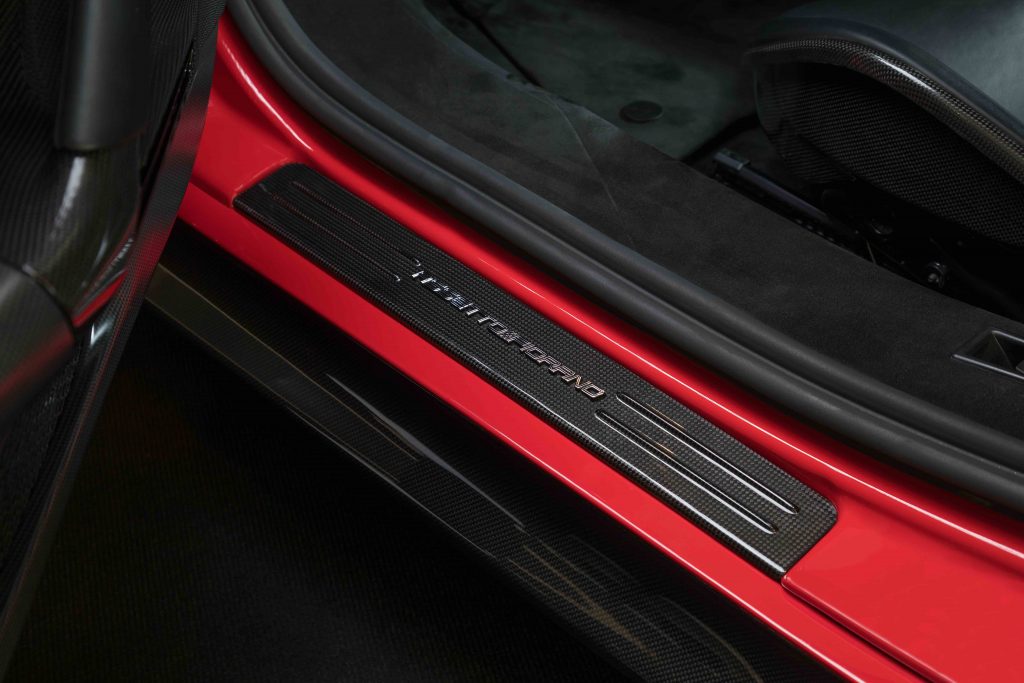
PRESS RELEASE: Naza Italia, official importer and distributor of the Ferrari brand in Malaysia, officially launched the highly anticipated SF90 Stradale today, in conjunction with the unveiling of the newly renovated Ferrari Petaling Jaya showroom. As the Prancing Horse’s first series production PHEV (Plug-in Hybrid Electric Vehicle), the SF90 Stradale turns the page to a whole new chapter in Ferrari’s history.
“The Ferrari SF90 Stradale is a symbol of innovation, growth and adaptation – a model that rises to meet the changing needs of the industry and Ferrari’s discerning clientele. Ferrari has successfully taken on the challenge of combining conventional and electrical power sources with its first ever plug-in hybrid vehicle, once again drawing upon its advanced technology from the track and making it applicable for the road. As the brand explores its potential in the hybrid era, we are thrilled to have the opportunity to bring models such as the SF90 Stradale to the Malaysian market,” said Dato’ Nik Hamdam Nik Hassan, Group CEO, Automotive Group, Naza Corporation Holdings Sdn Bhd.
The new model delivers unprecedented performance for a production car, with figures such as 1,000 cv, and a weight-to-power ratio of 1.57 kg/cv, and 390 kg of downforce at 250 km/h elevating the SF90 Stradale to the top of its segment. It also means a V8 is the top-of-the-range model for the first time in the marque’s history. Ferrari’s first hybrid production series model received the 2020 Red Dot: Best of the Best Award and was also the only car to have been bestowed one of 75 Gold Awards at the prestigious iF Design Awards 2020.
Its name, “SF90” – a reference to the 90th anniversary of the foundation of Scuderia Ferrari and “Stradale” – which translates to “road”, underscores the distinct link that has always existed between Ferrari’s track and road cars. A brilliant encapsulation of the most advanced technologies developed in Maranello, the SF90 Stradale is also the perfect demonstration of how Ferrari immediately transitions the knowledge and skills it acquires in competition to its production cars.
The SF90 Stradale has a 90° V8 turbo engine capable of delivering 780 cv, the highest power output of any 8-cylinder in Ferrari history. The remaining 220 cv is delivered by three electric motors, one at the rear, known as the MGUK (Motor Generator Unit, Kinetic) due to its derivation from the Formula 1 application, located between the engine and the new 8-speed dual-clutch transmission on the rear axle, and two on the front axle. This sophisticated system does not, however, make for a more complicated driving experience. Quite the opposite, in fact: the driver simply has to select one of the four power unit modes, and then just concentrate on driving. The sophisticated control logic takes care of the rest, managing the flow of power between the V8, the electric motors and the batteries.
The SF90 Stradale is also the first Ferrari sports car to be equipped with 4WD, a step necessary to allow the incredible power unleashed by the hybrid powertrain to be fully exploited, ensuring the car has become the new benchmark for standing starts: 0-100km/h in 2.5 sec and 0-200km/h in just 6.7 seconds.
Ferrari’s engineers were able to further broaden the spectrum of dynamic controls by introducing the full-electric front axle, known as the RAC-e (electronic cornering set-up regulator). As well as exclusively providing propulsion in electric drive, the two front motors independently control the torque delivered to the two wheels, extending the concept of Torque Vectoring. Fully integrated into the car’s vehicle dynamics controls, the RAC-e governs the distribution of torque, making driving on the limit much simpler and easier.
The introduction of this hybrid architecture was a challenge with regard to managing the additional weight which was resolved by an obsessive attention to detail and the overall optimisation of the whole of the car. For maximum performance in terms of overall weight, rigidity and centre of gravity, the chassis and bodyshell of the SF90 Stradale is all new, built using multi-material technology, including, for example, carbon fibre.
The development of a hybrid car of this kind demanded the development of a series of innovative aerodynamic solutions. The significant boost in the power unit’s performance brought with it an increase in the amount of heat energy to be dissipated and required the development team to carry out an in-depth review of the aerodynamic flows on the radiating masses. It also demanded new solutions to increase downforce efficiently and guarantee maximum stability at all speeds and in all driving conditions.
Particularly noteworthy is the innovative shut-off Gurney, a patented active system located at the rear of the car which regulates the air flow over the upper body, reducing drag at high speeds with low lateral dynamics loads and increasing downforce in corners, under braking and during changes of direction.
The new car is epoch-changing from a stylistic perspective as it completely rewrites the mid-rear-engined sports berlinetta proportions introduced on the 360 Modena twenty years ago, instead taking its inspiration from Ferrari’s recent supercars. A good example is the cockpit, which has a smaller frontal section and is placed closer to the front of the car to reduce drag. This was also achieved without impacting on-board comfort.
The track-derived “eyes on the road, hands on the wheel” philosophy takes on a truly central role for the first time too, significantly influencing the ergonomics and styling of the interior. The result is an HMI (Human-Machine Interface) and interior layout concept that are a complete departure from previous models.
Another major innovation is the steering wheel which now has a touchpad and a series of haptic buttons that allow the driver to control virtually every aspect of the car using just their thumbs. The central instrument cluster is now entirely digital with the first automotive application of a 16” curved HD screen which can be fully configured and controlled using the controls on the steering wheel.
On the central tunnel, improved ergonomics have been combined with an element from the past: the automatic gearbox controls are now selected by a grille-style feature that references Ferrari’s legendary manual gear-shift gate. Thus past and present skilfully merge to point the new Ferrari towards the future.
The SF90 Stradale also sees the debut of the new ignition key with full keyless technology which will gradually be introduced across the rest of the range, personalised with the model’s name. Thanks to a special compartment in the central tunnel, it becomes an integral part of the car’s styling.
In addition to the sporty version, which references the shape and colour of the signature rectangular Prancing badge sported by Ferrari’s road cars, there will also be a more elegant metal-coloured version.
For the first time on a Ferrari, clients can choose between the standard car and a version with a more sports-oriented specification. The Assetto Fiorano specification includes significant upgrades, including special GT racing-derived Multimatic shock absorbers, extra lightweight features made from high-performance materials such as carbon-fibre (door panels, underbody) and titanium (springs, entire exhaust line), resulting in a weight-saving of 30 kg. Another difference is the high downforce carbon-fibre rear spoiler which generates 390 kg of downforce at 250 km/h. The Assetto Fiorano includes Michelin Pilot Sport Cup2 tyres designed specifically to improve performance on the track in the dry. They feature a softer compound and fewer grooves than the tyres provided as standard.
POWERTRAIN
The SF90 Stradale is the first ever Ferrari to feature PHEV (Plug-in Hybrid Electric Vehicle) architecture which sees the internal combustion engine integrated with three electric motors, two of which are independent and located on the front axle, with the third at the rear between the engine and the gearbox.
The internal combustion engine and the electric motors work in synergy to unleash an incredible 1,000 cv which means the SF90 Stradale sets a whole new benchmark in terms of its performance and innovative content not just with regard to the Ferrari range, but also its competitors.
INTERNAL COMBUSTION ENGINE
Thanks to its 780-cv power output, the turbo V8 featured in the SF90 Stradale raises the bar for the performance limits achievable by this type of architecture. The starting point was the F154 family engine which has won the International Engine of the Year award for the fourth consecutive year, an unprecedented achievement for any power unit.
Together with its 195 cv/l specific power output, which is the highest in the segment, the engine also delivers 800 Nm of torque at 6,000 rpm. To deliver this extraordinary result, Ferrari’s engineers focused on several different areas of the engine, starting by increasing its capacity from 3,902 cc to 3,990 cc thanks to a larger bore of 88 mm.
The intake and exhaust system was completely redesigned and now features a new, narrower cylinder head with a central injector and the adoption of 350-bar GDI, another first for a Ferrari V8.
To improve the internal fluid dynamics, not only was a larger diameter intake valve adopted but the ducts are all horizontally lined up at engine head height; the turbo charger assembly has been lowered while the exhaust line is higher, as testified by the fact that the tail pipes are now in the upper section of the rear bumper. The turbos are now equipped with electronically-controlled wastegates to improve catalyser heating and new compressor volutes to optimise fluid-dynamics.
The re-engineering goes well beyond fluid-dynamics: the rationalisation of the layout has resulted in both a lower centre of gravity, thanks in part to the adoption of a smaller-diameter fly wheel, and a reduction in overall weight thanks to the use of Inconel instead of steel for the exhaust manifold. Meticulous attention was lavished on sound quality when redesigning the exhaust system and the result is fuller, richer harmonics across the entire frequency range.
GEARBOX
The SF90 Stradale sports a completely redesigned 8-speed, oil-bath, dual-clutch transmission. New gear ratios and improved transmission efficiency yield a significant reduction in fuel consumption in urban and motorway driving (-8% in the WLTP cycle) without having to compromise on performance. In fact, there is even a 1% improvement in efficiency on the track.
An optimised layout, achieved through the adoption of a dry sump and a significantly more compact clutch assembly with a 20% smaller exterior diameter than the current gearbox, has shaved 15 mm off the installed height in the car which, in turn, lowers the centre of gravity of the running gear by the same amount.
Despite the addition of an eighth gear and a maximum torque boost to 900 Nm (the latter an increase of 20% on the current 7-speed), the gearbox’s overall weight is actually 7 kg lower. That figure rises to 10 kg when the elimination of the reverse gear – now incorporated in the function of the front electric motors – is included.
The new clutch’s performance is 35% higher, transmitting up to 1200 Nm in dynamic torque in gear shifts. Thanks to new-generation actuation hydraulics, total clutch fill times have been cut to 200 ms compared to the 488 Pista’s 300 ms.
ELECTRIC MOTORS
The SF90 Stradale is equipped with three electric motors capable of generating a total of 220 cv (162 kW). A high performance Li-ion battery provides power to all three motors and guarantees a 25-kilometre range in all-electric eDrive mode, using just the front axle. When the internal combustion engine is turned off, the two independent front motors deliver a maximum speed of 135 km/h with longitudinal acceleration of ≤0.4 g. Reverse can only be used in eDrive mode which means the car can be manoeuvred at low speeds without using the V8. The front motors are integrated into the launch control strategy for maximum performance when accelerating.
FUNCTION MODES
The internal combustion engine and electric motors work in synergy to generate an incredible 1,000 cv, which puts the SF90 Stradale at the very top of the range in performance terms. The control logic optimally manages the power flows either with the emphasis on efficiency or performance depending on the user profile selected by the driver.
Thanks to an additional steering wheel-mounted selector, dubbed the eManettino (analogous to the Manettino which is used to set the electronic vehicle dynamics modes), the driver can choose from four different power unit management modes:
eDrive: the internal combustion engine remains off and traction is entrusted entirely to the electric front axle. Starting with a fully charged battery, the car can cover up to 25 km in this mode. This mode is ideal for city centre driving or any other situation in which the driver wishes to eliminate the sound of the Ferrari V8.
Hybrid: this is the default setting when the car is turned on, in which the power flows are managed to optimise the overall efficiency of the system. The control logic autonomously decides whether to keep the internal combustion engine running or turn it off. If it is on, the internal combustion engine can run at maximum power thus guaranteeing powerful performance whenever the driver requires.
Performance: unlike ‘Hybrid’, this mode keeps the ICE running because the priority is more on charging the battery than on efficiency. This guarantees that power is instantly and fully available when required. This mode is best suited to situations in which driving pleasure and fun behind the wheel are the main focus.
Qualify: this mode allows the system to achieve maximum power output by allowing the electric motors to work at their maximum potential (162kW). The control logic prioritises performance over battery charging.
CHASSIS
Although the extra 270 kg required to incorporate the hybrid system into the car have been amply offset by the extra power delivery (220 cv, with a weight/power ratio for the system alone of 1.23 kg/cv), in-depth research was still required to ensure that overall weight was kept to 1,570 kg, thus guaranteeing a record-breaking weight/power ratio of 1.57 kg/cv.
The chassis has been completely redesigned with a multi-material and multi-technology approach to absorb the extra stresses associated with the new power unit and the introduction of AWD. A number of technological innovations have been introduced, not least hollow castings, which replace the traditional ribbed castings. Other new solutions include an all-carbon-fibre bulkhead between the cabin and the engine and two new aluminium alloys, one of which is a high-strength 7000 series alloy for some of the sheet metal. As a result, the SF90 Stradale chassis boasts 20% higher bending stiffness and 40% higher torsional rigidity than previous platforms without any increase in weight. This has significant advantages for the car’s dynamics. NVH (noise, vibration, harshness) characteristics have also been improved by the use of a new alloy known as ‘quiet aluminium’ for the floor pan.
AERODYNAMICS
The greatest challenge in crafting the aerodynamics of the SF90 Stradale was posed by the need to deliver downforce and aerodynamic efficiency at a level never before achieved either by Ferrari or its competitors, whilst simultaneously guaranteeing that all the subsystems of the new power unit (internal combustion engine, electric motors, battery and inverters) would always function as optimally as possible.
As always, the aerodynamics department worked closely with Ferrari Design and this produced downforce and efficiency figures unmatched by any other car in the segment. Once again, they were achieved in typical Ferrari fashion: rather than using simple add-on elements, the car’s forms were meticulously sculpted.
The results in terms of performance are impressive indeed: thanks to its ability to generate 390kg of downforce at 250 km/h, the SF90 Stradale is now the new benchmark for downforce and efficiency in high-performance road cars.
DESIGN
The SF90 Stradale is the most advanced car in the range from a point of view of performance and technology. The definition of the exterior styling was inspired by that principle: to create a forward-looking, innovative design that transmits the car’s mission as an extreme sports car – Ferrari’s first series production supercar.
Ferrari Design has thus completely revisited the proportions of the front, central and rear volumes in a radical evolution of the forms of Ferrari’s mid-rear-engined production berlinettas of the last twenty years.
The aim was to design a leading-edge extreme car capable of delivering completely unprecedented performance for a Prancing Horse production car. The SF90 Stradale slots in between the mid-rear-engined coupés, today represented by the F8 Tributo, and supercars of the likes of LaFerrari, and is the new standard-bearer for hyper-technological extreme cars brimming with future-forward content.
EXTERIOR
The SF90 Stradale’s architecture, in which the cabin is located ahead of the mid-mounted engine, provided Flavio Manzoni and his team of designers at the Ferrari Styling Centre, with the ideal platform on which to craft a genuine supercar of impeccable proportions.
More compact overhangs (the rear one is shorter than the front one in particular) and the frontward-shift of the cabin have created a cab-forward-type architecture which emphasises the fact that the engine is mid-mounted. A very low centre of gravity has also allowed the designers to lower the cabin area by 20 mm. Combined with a more curved windshield, slender A-posts and a wide track, this creates a beautifully proportioned car with sleeker volumes.
The compact bubble-shaped cabin has an aeronautical cockpit feel and the fact that it has been shifted so far forward is further emphasised by the geometry of the two body-coloured rear flying buttresses that enclose the rear.
Another signature solution is the headlights which hail a move away from the L-shaped look, to a slender slit design integrated with the brake air intakes resulting in a characteristic C-shape which lends the front of the car an original and futuristic appeal.
In an absolute first for a Ferrari, the SF90 Stradale uses matrix LED headlight technology to improve visibility in all driving conditions thanks to active beam control.
The rear of the car is dominated by high exhaust pipes which are the result of optimisation of the exhaust line layout. Because the power- train is significantly lower in the car than in the past, the designers were also able to lower the car’s tail. Another deviation from the styling typical of past berlinettas is the way the profile of the rear screen no longer follows the line from the roof to the rear bumper. This element of styling discontinuity is evidenced by the separation of the screen from the cooling grille.
The tail lights have also evolved quite radically from Ferrari’s iconic round shape. The eye-catching, more horizontal luminous rings create a more horizontal perception of the tail lights which in turn visually lowers the height of the tail.
INTERIOR
While the SF90 Stradale’s exterior was crafted to underscore its seamless combining of form, technology and performance, the interior is even more radical. The very explicit aim there was to create a cockpit that ushered in an entirely new design direction, the effects of which would carry over into Ferrari’s entire future range.
The designers took a futuristic approach to the interface concept with a strong focus on creating a wraparound aeronautically-inspired cockpit with particular emphasis on instruments. This further emphasised and underscored the symbiotic relationship between car and driver. In fact, the SF90 Stradale makes an epoch-changing leap forward both in formal and content terms, updating the Human Machine Interface with all-digital technology.
In a first for a Ferrari, the central instrument cluster comprises a single 16” digital HD screen which curves towards the driver to make it easier to read and to emphasise the F1-style wrap-around cockpit effect. This is the first time this type of screen has been adopted in a production car.
When the engine and motors are off, the onboard instruments go black lending the cockpit a wonderfully sleek, minimalist look. In line with Ferrari tradition, the default screen is dominated by a large circular rev counter which, however, this time is framed by the battery charge indicator. The navigation screen is on one side of the rev counter with the audio control one on the other.
The “hands-on-the-wheel” philosophy has consistently driven the development of the human-machine interface in every Ferrari F1 car and its subsequent gradual transfer to its road-going sports cars. The SF90 Stradale’s steering wheel completes that transfer process from the competition world and also ushers in a new era by introducing a series of touch commands that allow the driver to control virtually every aspect of the car without ever taking their hands off the wheel.
The traditional controls include the now-classic steering-wheel mounted headlight control, windscreen wipers, indicators and the Manettino for driving modes.
Of the new touch controls, the compact but functional pad on the right-hand spoke allows the driver to navigate the central cluster screens, while voice and cruise controls are on the left-hand spoke. Also noteworthy is the adoption of a rotary switch for cruise control, a solution derived directly from the Formula 1 car. In the bottom left section of the central area, there are four buttons the driver uses to select the power unit use mode.
The Head Up Display is another part of the innovative HMI and allows various data to be projected onto the windshield within the driver’s field of vision so that their attention is not distracted from driving.
From a creative perspective, the SF90 Stradale interface project gave the Ferrari Style Centre’s designers the opportunity to interpret the screens in the cabin as a canvas on which all the car’s functions and controls could be represented. The screen graphics on the SF90 Stradale were also designed to create a 3D effect which is particularly striking during transitions, such as when the instrument panel is turned on or when swapping from one screen to the next.
Alongside the new-concept HMI, another major theme tackled in the cabin was the tunnel area interface. The F1 controls on the “bridge” are probably the most iconic of the Ferraris of recent generations. These have been completely redesigned and set into a modern metal plate which references an equally iconic feature from the past: the classic gear lever gate.
7 YEARS MAINTENANCE
Ferrari’s unparalleled quality standards and increasing focus on client service underpin the extended seven-year maintenance programme offered with the SF90 Stradale. Available across the entire Ferrari range, the programme covers all regular maintenance for the first seven years of the car’s life. This scheduled maintenance is an exclusive service that allows clients the certainty that their car is being kept at peak performance and safety over the years. This very special service is also available to owners buying pre-owned Ferraris.
Regular maintenance (at intervals of either 20,000 km or once a year with no mileage restrictions), original spares and meticulous checks by staff trained directly at the Ferrari Training Centre in Maranello using the most modern diagnostic tools are just some of the advantages of the Genuine Maintenance Programme.
The service is available on all markets worldwide and from all Dealerships in the Official Dealership Network.
The Genuine Maintenance programme further extends the range of after-sales services offered by Ferrari to satisfy clients wishing to preserve the performance and excellence that are the signatures of all cars built at the factory in Maranello which has always been synonymous with leading-edge technology and sportiness.
The Ferrari SF90 Stradale is available from the base price of RM 1,908,000.00 (before duties, customization options, taxes and insurance).

